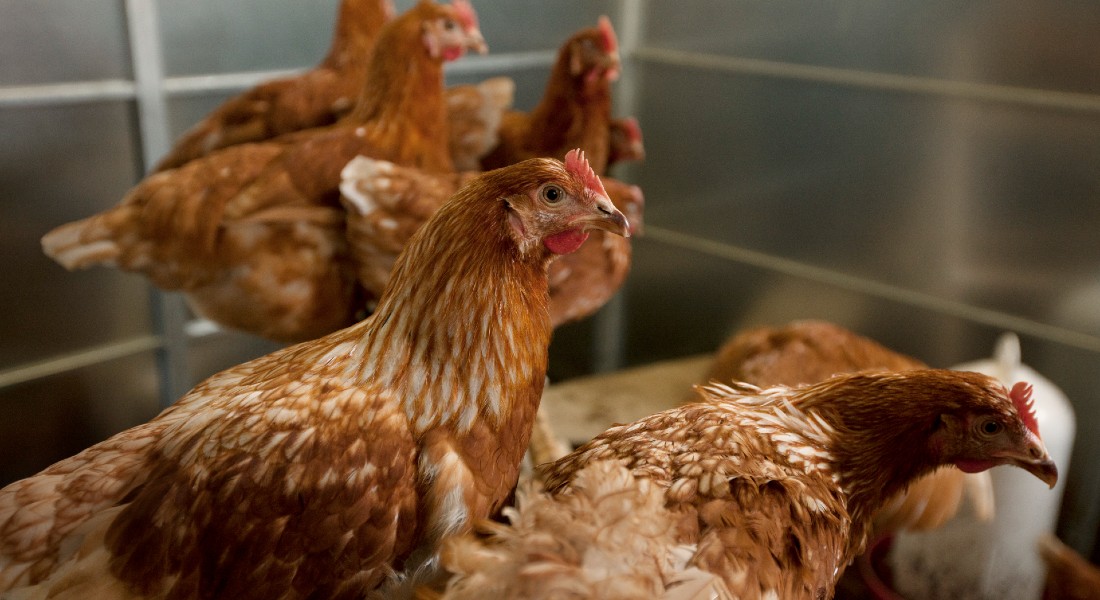Painful fractures: Large eggs push small hens to the breaking point
The majority of laying hens in Denmark suffer from keel bone fractures, a new study conducted at the University of Copenhagen reveals. The fractures appear to be the result of disproportionately large eggs, which push the hen’s body to the breaking point. The researchers behind the new study call it a huge global problem for animal welfare.

The indigenous hen lays around 20 eggs a year, whereas a modern laying hen produces around 320 eggs a year. In other words, being a hen bred for the food industry is a full-time job. In fact, the egg laying appears to be such a strain on Danish as well as foreign hens that it results in bone fractures.
New research from the University of Copenhagen shows that too large eggs in too small hens affect the Danish animal welfare. In the largest study of its kind, the researchers have shown that around 85 per cent of Danish laying hens suffer from keel bone fractures. This is, to all appearances, because the large eggs pressure their bodies from within.
‘We knew there was a problem, but we certainly did not expect it to apply to almost all laying hens in the country. These animals suffer, both when the fracture occurs and afterwards, so we are dealing with a huge animal welfare problem here’, says Assistant Professor Ida Thøfner from the Department of Veterinary and Animal Sciences. She explains that the problem is not only widespread among Danish hens, but is of global extent.
If you have ever tried to fracture a bone, you know that it hurts. A cast and rest is not an option for laying hens, whose fractures probably hurt a lot and take a long time to heal
A painful problem among both organic, battery, barn and free-range hens
Together with Professor Jens Peter Christensen, she has examined almost 4,800 hens in 40 different flocks for keel bone fractures and found fractures in almost 4,100 of them.
‘We see these types of fractures in all production systems. That is, regardless of whether the hens are kept in cages, or they are organic or barn or free-range hens. In other words, it is a widespread problem in all parts of the industry’, says Jens Peter Christensen.
He explains that fractures usually occur at the tip of the keel bone, and the nature of these fractures suggests that the hen’s body is simply under too much strain due to too large eggs.
‘If you have ever tried to fracture a bone, you know that it hurts. A cast and rest is not an option for laying hens, whose fractures probably hurt a lot and take a long time to heal’, he says.
Small hens, large eggs
The researchers also tried to identify the exact cause for the many fractured bones by pointing out the risk factors in play.
‘Generally, we can see that the larger the eggs and the smaller the hens, the greater the problem. Their bodies are simply under too much strain because they are bred to be small and to lay a lot of large eggs. At the same time, we know that the keel bone takes a long time to mature. Unfortunately, it takes some generations of hen breeding to solve that problem’, says Jens Peter Christensen.
However, Danish farmers may be able to reduce the problem quickly and without having to involve the breeding companies.
‘The earlier these hens enter into production, the larger the problem is. We are fairly convinced that you could postpone egg laying for a couple of weeks until the hens are more robust and the keel bone is more resilient to fracturing without losing money, because the hens will simply lay eggs for a longer time if you follow this strategy’, Ida Thøfner explains.
The researchers now hope to attract funding for an intervention project in order to study the effect of various measures on solving the problem and increasing the animal welfare.
Read the entire study, which has been published in the scientific journal PLOS One: ’Keel bone fractures in Danish laying hens: Prevalence and risk factors’
The Danish Agriculture and Food Council contributed to the study.
Contact
Professor Jens Peter Christensen
+45 35 33 27 48
jpch@sund.ku.dk
Assistant Professor Ida Thøfner
+45 35 33 64 56
icnt@sund.ku.dk
Press Officer Mathias Traczyk
+45 93 56 58 36
mathias.traczyk@sund.ku.dk
